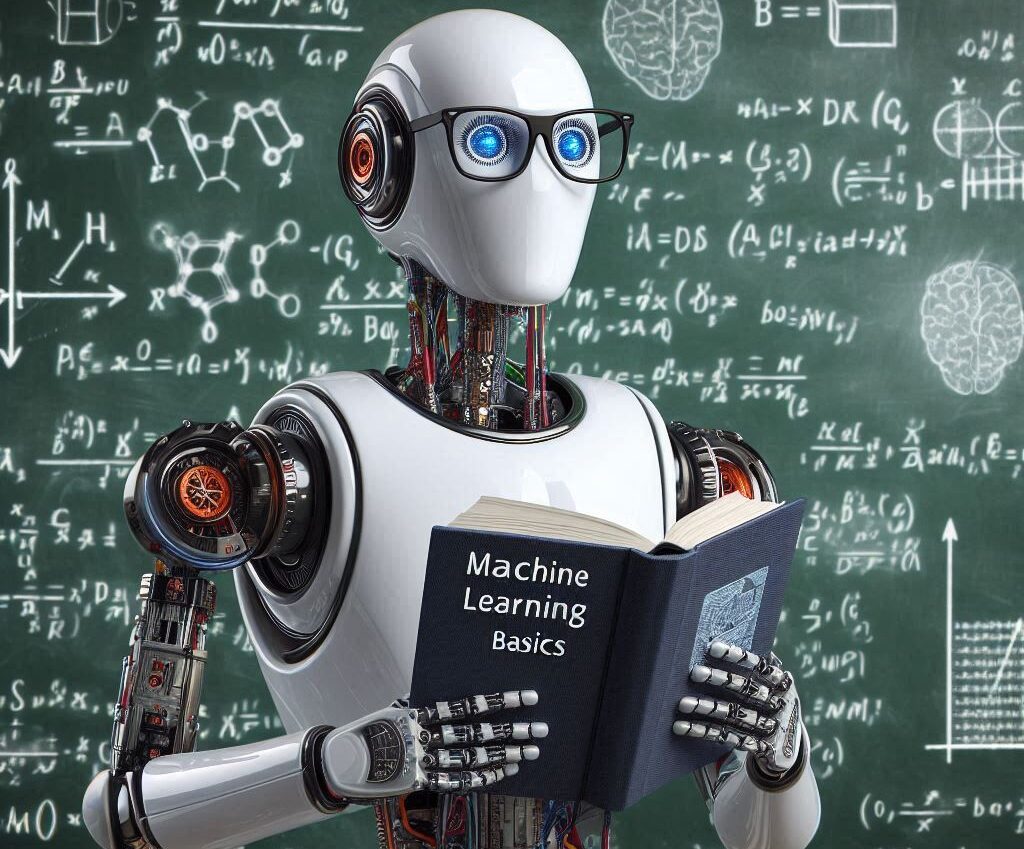Artificial Intelligence (AI) has become an integral part of our daily lives, powering everything from smartphone assistants to autonomous vehicles. At the heart of many AI systems lies a powerful technology called machine learning. But what exactly is machine learning, and how does it fit into the broader landscape of AI?
Machine learning is a subset of AI that focuses on creating systems that can learn and improve from experience without being explicitly programmed. Instead of following pre-defined rules, machine learning algorithms use data to identify patterns and make decisions with minimal human intervention.
The Relationship Between AI and Machine Learning
To understand the relationship between AI and machine learning, think of AI as a large umbrella encompassing various technologies that enable machines to simulate human intelligence. Machine learning is one of the key approaches under this umbrella, alongside other techniques like expert systems and natural language processing.
Imagine AI as a tree:
– The roots represent the foundational concepts of artificial intelligence.
– The trunk symbolizes the core AI technologies and methodologies.
– The main branches represent different AI approaches, with machine learning being one of the largest and most influential branches.
– The smaller branches and leaves represent specific machine learning algorithms and applications.
Machine Learning for Beginners
Key Concepts in Machine Learning
To grasp the basics of machine learning, it’s essential to understand a few fundamental concepts:
- Data: The fuel that powers machine learning algorithms. Data can come in various forms, such as numbers, text, images, or sound.
- Features: The individual measurable properties of the data. For example, if we’re trying to predict house prices, features might include square footage, number of bedrooms, and location.
- Labels: The target variable we’re trying to predict or classify. In the house price example, the label would be the actual price of the house.
- Model: A mathematical representation of the real-world process we’re trying to understand or predict.
- Training: The process of teaching the model to make predictions or decisions based on the data.
- Inference: Using the trained model to make predictions on new, unseen data.
Types of Machine Learning
Machine learning can be broadly categorized into three main types:
- Supervised Learning: The algorithm learns from labeled data. It’s like learning with a teacher who provides the correct answers.
Example: Predicting house prices based on historical sales data.
- Unsupervised Learning: The algorithm learns from unlabeled data, trying to find patterns or structures on its own.
Example: Grouping customers into segments based on their purchasing behavior.
- Reinforcement Learning: The algorithm learns by interacting with an environment, receiving rewards or penalties for its actions.
Example: Training an AI to play chess by having it play many games and learn from wins and losses.
A Simple Machine Learning Example: Linear Regression
Let’s walk through a simple example to illustrate how machine learning works in practice. We’ll use linear regression, a fundamental supervised learning algorithm.
Imagine you’re a real estate agent trying to predict house prices based on their size. You have data on house sizes (in square feet) and their corresponding prices:
“`
Size (sq ft) | Price ($)
————————
1000 | 200,000
1500 | 300,000
2000 | 350,000
2500 | 450,000
3000 | 500,000
“`
Linear regression aims to find the best straight line that fits this data. The line equation would be:
“`
Price = m * Size + b
“`
Where `m` is the slope (how much the price changes for each square foot), and `b` is the y-intercept (the base price when the size is 0).
A machine learning algorithm would analyze this data and determine the optimal values for `m` and `b`. Let’s say it comes up with:
“`
Price = 150 * Size + 50,000
“`
Now you can use this model to predict the price of a house given its size. For example, for a 1800 sq ft house:
“`
Predicted Price = 150 * 1800 + 50,000 = 320,000
“`
This simple example demonstrates the core idea behind many machine learning algorithms: finding patterns in data to make predictions.
Intermediate Machine Learning Concepts
As we delve deeper into machine learning, we encounter more sophisticated concepts and techniques that allow us to tackle complex real-world problems.
Feature Engineering
Feature engineering is the process of using domain knowledge to extract relevant features from raw data. It’s a crucial step in improving model performance.
Example: In a text classification problem, instead of using raw text, we might extract features like:
– Word frequency
– Sentence length
– Presence of specific keywords
– Sentiment scores
Model Evaluation and Metrics
To assess how well our models are performing, we use various evaluation metrics:
1. For Regression Problems:
– Mean Squared Error (MSE)
– Root Mean Squared Error (RMSE)
– Mean Absolute Error (MAE)
– R-squared (R²)
2. For Classification Problems:
– Accuracy
– Precision
– Recall
– F1 Score
– Area Under the ROC Curve (AUC-ROC)
Overfitting and Underfitting
Two common challenges in machine learning are overfitting and underfitting:
– Overfitting: The model learns the training data too well, including its noise and peculiarities, leading to poor generalization on new data.
– Underfitting: The model is too simple to capture the underlying patterns in the data.
To combat these issues, we use techniques like:
– Cross-validation
– Regularization
– Ensemble methods
Ensemble Methods
Ensemble methods combine multiple models to create a more robust and accurate prediction. Popular ensemble methods include:
- Random Forests: Combines multiple decision trees.
- Gradient Boosting: Builds models sequentially, with each new model correcting the errors of the previous ones.
- Bagging: Trains multiple models on different subsets of the data and averages their predictions.
Advanced Machine Learning and AI Techniques
As we move into more advanced territory, we encounter sophisticated techniques that power many of today’s cutting-edge AI applications.
Deep Learning and Neural Networks
Deep learning is a subset of machine learning based on artificial neural networks with multiple layers. These networks are inspired by the structure and function of the human brain.
Key concepts in deep learning include:
- Neurons and Layers: The basic building blocks of neural networks.
- Activation Functions: Non-linear functions that introduce complexity into the network.
- Backpropagation: The algorithm used to train neural networks by adjusting weights.
- Convolutional Neural Networks (CNNs): Specialized networks for processing grid-like data, such as images.
- Recurrent Neural Networks (RNNs): Networks designed to work with sequential data, like text or time series.
Example Application: Image Recognition
Imagine we’re building an AI system to recognize handwritten digits (0-9). A CNN for this task might have the following structure:
- Input Layer: Receives the pixel values of the image (e.g., 28×28 pixels).
- Convolutional Layers: Apply filters to detect features like edges and shapes.
- Pooling Layers: Reduce the spatial dimensions of the data.
- Fully Connected Layers: Combine the features to make the final classification.
- Output Layer: Produces probabilities for each digit (0-9).
Natural Language Processing (NLP)
NLP is a field at the intersection of machine learning, AI, and linguistics, focused on enabling computers to understand, interpret, and generate human language.
Key NLP techniques include:
- Tokenization: Breaking text into individual words or subwords.
- Part-of-Speech Tagging: Identifying the grammatical parts of speech in a sentence.
- Named Entity Recognition: Identifying and classifying named entities (e.g., person names, organizations) in text.
- Sentiment Analysis: Determining the emotional tone of a piece of text.
- Machine Translation: Automatically translating text from one language to another.
Example Application: Chatbots
Modern chatbots use advanced NLP techniques to understand user queries and generate appropriate responses. They might employ:
– Intent Classification: Determining the user’s intention (e.g., asking for information, making a complaint).
– Entity Extraction: Identifying key pieces of information in the user’s message.
– Dialogue Management: Keeping track of the conversation context.
– Response Generation: Creating human-like responses based on the understood intent and entities.
Reinforcement Learning in Depth
Reinforcement learning (RL) is a type of machine learning where an agent learns to make decisions by interacting with an environment. It’s particularly useful for problems involving sequential decision-making.
Key concepts in RL include:
- Agent: The learner or decision-maker.
- Environment: The world in which the agent operates.
- State: The current situation of the agent in the environment.
- Action: A move the agent can make.
- Reward: Feedback from the environment indicating the desirability of the action.
- Policy: The strategy the agent employs to determine the next action.
Example Application: Game AI
Consider an AI learning to play a video game. The process might look like this:
- The agent (AI player) observes the current game state (screen pixels, score, etc.).
- Based on its current policy, it chooses an action (move left, jump, etc.).
- The action is performed in the game environment.
- The agent receives a reward (points gained or lost) and observes the new state.
- The agent updates its policy based on this experience to make better decisions in the future.
Through many iterations of this process, the AI can learn to play the game at a high level, sometimes even surpassing human performance.
Ethical Considerations in AI and Machine Learning
As AI and machine learning become more prevalent in our lives, it’s crucial to consider the ethical implications of these technologies.
Bias and Fairness
Machine learning models can inadvertently perpetuate or amplify societal biases present in their training data. This can lead to unfair or discriminatory outcomes, particularly in sensitive areas like hiring, lending, or criminal justice.
Example: An AI-powered hiring tool might discriminate against certain groups if trained on historical data that reflects past biases in hiring practices.
To address this, researchers and practitioners are developing techniques for:
– Detecting bias in datasets and models
– Developing fair machine learning algorithms
– Implementing post-processing techniques to ensure equitable outcomes
Privacy and Data Protection
The effectiveness of machine learning often depends on access to large amounts of data, which can raise privacy concerns.
Key considerations include:
– Data anonymization and pseudonymization
– Federated learning (training models on decentralized data)
– Differential privacy (adding noise to data to protect individual privacy)
Transparency and Explainability
As machine learning models become more complex, it’s increasingly important to be able to explain their decisions, especially in high-stakes applications.
Techniques for improving model interpretability include:
– LIME (Local Interpretable Model-agnostic Explanations)
– SHAP (SHapley Additive exPlanations)
– Attention mechanisms in neural networks
AI Safety
As AI systems become more powerful, ensuring their safe and controlled development is paramount. Key areas of AI safety research include:
- Robustness: Ensuring AI systems perform well even in unexpected situations.
- Scalable Oversight: Developing methods to monitor and control AI systems as they become more complex.
- Corrigibility: Designing AI systems that can be safely interrupted or modified if necessary.
- Value Alignment: Ensuring AI systems’ goals and behaviors align with human values.
The Future of Machine Learning and AI
As we look to the future, several exciting trends and potential developments are shaping the field of machine learning and AI:
Artificial General Intelligence (AGI)
While current AI systems excel at specific tasks, the holy grail of AI research is Artificial General Intelligence – AI that can perform any intellectual task that a human can. Although AGI remains a distant goal, research in areas like meta-learning and transfer learning is bringing us closer to more flexible and adaptable AI systems.
Quantum Machine Learning
The emerging field of quantum computing holds promise for revolutionizing machine learning. Quantum algorithms could potentially solve certain problems exponentially faster than classical computers, opening up new possibilities in areas like optimization and cryptography.
AI in Scientific Discovery
Machine learning is increasingly being used to accelerate scientific discovery in fields like drug discovery, materials science, and climate modeling. For example, AI systems are being used to:
– Predict protein structures (as demonstrated by DeepMind’s AlphaFold)
– Design new materials with specific properties
– Analyze vast datasets in particle physics experiments
Edge AI
As devices become more powerful, there’s a trend towards running AI models directly on edge devices (like smartphones or IoT devices) rather than in the cloud. This can lead to faster response times, improved privacy, and reduced network dependency.
AI and Creativity
AI is increasingly being used in creative fields, challenging our understanding of creativity and art. Examples include:
– AI-generated art (e.g., DALL-E, Midjourney)
– AI in music composition and production
– AI-assisted writing and storytelling
Conclusion: Machine learning and AI have come a long way from their early beginnings, evolving into powerful technologies that are reshaping industries and society. From the foundational concepts of supervised and unsupervised learning to the cutting-edge developments in deep learning and reinforcement learning, the field continues to advance at a rapid pace.
As we’ve explored in this guide, machine learning is not just about algorithms and data – it’s a multifaceted discipline that intersects with ethics, creativity, and scientific discovery. Whether you’re a beginner just starting to grasp the basics or an expert pushing the boundaries of what’s possible, the world of machine learning and AI offers endless opportunities for learning, innovation, and impact.
As these technologies continue to evolve, it’s crucial that we approach their development and deployment thoughtfully, considering not just their technical capabilities but also their broader implications for society. By doing so, we can harness the power of machine learning and AI to create a future that is not only technologically advanced but also fair, transparent, and aligned with human values.




